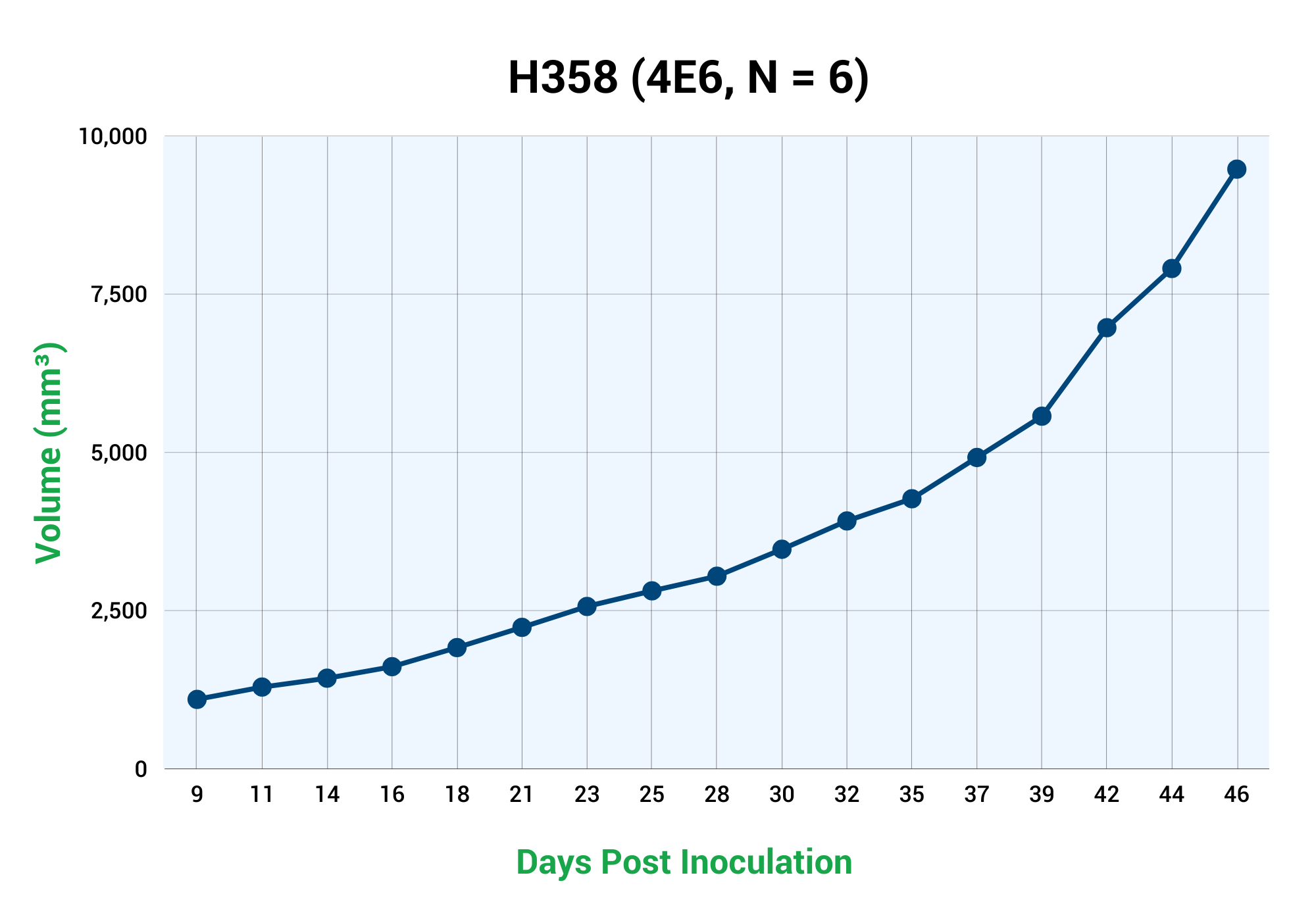About NCI-H358
The NCI-H358 (also H358, H-358) cell line is derived from human epithelial non-small-cell lung cancer, specifically bronchioalveolar carcinoma, obtained from the tissue of a bronchiole tumor in a male patient prior to chemotherapy treatments. It was established in 1981 and has since played a significant role in advancing our understanding of lung cancer biology, particularly in relation to cell signaling pathways. In vitro, NCI-H358 cells exhibit adherent growth characteristics and display epithelial morphology. These features resemble the histological properties of the original tumor, further confirming the suitability of NCI-H358 as a model for studying epithelial non-small-cell lung cancer.
NCI-H358 cells express SP-A (surfactant protein-A), which is the major surfactant-associated protein found in the lungs. SP-A is involved in pulmonary surfactant homeostasis and plays a critical role in lung development and innate immune defense. The expression of SP-A in NCI-H358 cells suggests their origin from the bronchioalveolar epithelium and highlights their potential relevance as a model for studying bronchioalveolar carcinoma. NCI-H358 cells do not express SP-B and SP-C, which are other important surfactant-associated proteins found in the lungs. This distinctive protein expression profile of NCI-H358 cells contributes to their characterization as a bronchioalveolar carcinoma model and underscores the molecular heterogeneity observed in non-small-cell lung cancer.
Preliminary data suggests that NCI-H358 cells may exhibit sensitivity to receptor tyrosine kinase (RTK) targeted agents. RTKs are a class of cell surface receptors involved in diverse cellular processes, including cell growth, survival, and proliferation. Aberrant activation of RTKs is commonly observed in lung cancer and contributes to tumor development and progression. The sensitivity of NCI-H358 cells to RTK targeted agents indicates the potential therapeutic relevance of inhibiting specific RTK signaling pathways in the treatment of non-small-cell lung cancer.
Validation Case Study: NCI-H358 Non-Small Cell Lung

When xenografted into the SRG Rat, NCI-H358 cells produce well-defined, firm tumors. This tumor phenotype reflects the characteristics of NCI-H358 cells and provides an in vivo platform for studying tumor growth dynamics, metastasis, and response to therapeutic interventions. The ability of NCI-H358 cells to form well-defined tumors facilitates the assessment of tumor size, vascularization, and tumor-host interactions, contributing to a more comprehensive understanding of bronchioalveolar carcinoma biology.
Products & Services
Xenograft Efficacy Studies
Includes collection of blood, tissues & tumor for ADME, PK/PD and analysis.
(Bi)weekly Tumor Sampling
Via fine needle aspiration (FNA). For longitudinal evaluation of drug exposure, histology and gene expression.
OncoRats
Cutting edge models optimized for engraftment.
Get help with your research by scheduling a call with Hera.
References
- 10.3389/fped.2021.799693
- 10.3390/ijms19113491
- 10.1186/1471-2466-8-6
References MLA
- Depicolzuane, Lynnlee, et al. “Surfactant Protein-a Function: Knowledge Gained from SP-a Knockout Mice.” Frontiers, 3 Dec. 2021, www.frontiersin.org/articles/10.3389/fped.2021.799693/full.
- Tafel, Oliver, et al. “Surfactant Proteins SP-B and SP-C and Their Precursors in Bronchoalveolar Lavages from Children with Acute and Chronic Inflammatory Airway Disease – BMC Pulmonary Medicine.” BioMed Central, 11 Apr. 2008, bmcpulmmed.biomedcentral.com/articles/10.1186/1471-2466-8-6.
- Yamaoka, Toshimitsu, et al. “Receptor Tyrosine Kinase-Targeted Cancer Therapy.” MDPI, 6 Nov. 2018, www.mdpi.com/1422-0067/19/11/3491.

